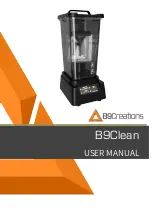
Storing paper
49
Media specifications
Selecting paper
Proper paper loading helps prevent jams and ensures trouble-free printing.
To help avoid jams or poor print quality:
•
Always
use new, undamaged paper.
•
Before loading paper, know the recommended print side of the paper. This information is usually indicated on the
paper package.
•
Do not
use paper that has been cut or trimmed by hand.
•
Do not
mix media sizes, weights, or types in the same source; mixing results in jams.
•
Do not
use coated papers unless they are specifically designed for electrophotographic printing.
•
Do not
forget to change the Paper Size setting when using a source that does not support auto size sensing.
•
Do not
remove trays while a job is printing or
Busy
appears on the operator panel.
•
Make sure the Paper Type and Paper Weight settings are correct. (See “Paper Menu” in the
Menus and Messages
Guide
on the publications CD for detailed information about these settings.)
•
Make sure the paper is properly loaded in the source.
•
Flex paper back and forth. Do not fold or crease the paper. Straighten the edges on a level surface.
Storing paper
Use the following guidelines to avoid paper feeding problems and uneven print quality.
•
Store paper in an environment where the temperature is approximately 21°C (70°F) and the relative humidity is
40%.
•
Store cartons of paper on a pallet or shelf rather than directly on the floor.
•
If you store individual packages of paper out of the original carton, make sure they rest on a flat surface so the
edges do not buckle or curl.
•
Do not place anything on top of paper packages.
•
Store paper in its original wrapper until you load it into the printer.
Selecting preprinted forms and letterhead
Use the following guidelines when selecting preprinted forms and letterhead paper for the printer:
•
Use grain long papers for best results for 60 to 90 g/m
2
weights.
•
Use only forms and letterhead printed using an offset lithographic or engraved printing process.
•
Avoid papers with rough or heavily textured surfaces.
Use papers printed with heat-resistant inks designed for use in xerographic copiers. The ink must withstand temperatures
of 230°C (446°F) without melting or releasing hazardous emissions. Use inks that are not affected by the resin in toner. Inks
that are oxidation-set or oil-based should meet these requirements; latex inks might not. When in doubt, contact the paper
supplier.
Preprinted papers such as letterhead must be able to withstand temperatures up to 230°C (446°F) without melting or
releasing hazardous emissions.
Содержание InfoPrint 1754dn
Страница 1: ...InfoPrint Color 1754 1764 MT 4936 4937 User s Guide S510 7032 00...
Страница 109: ......
Страница 110: ...Printed in USA S510 7032 00...
















































